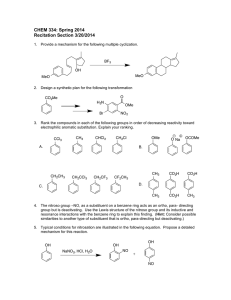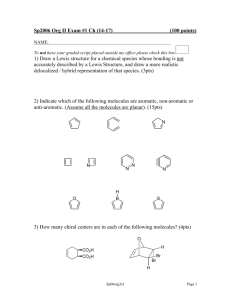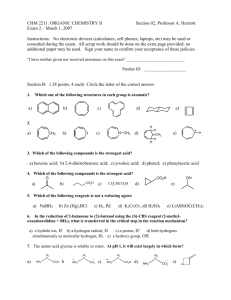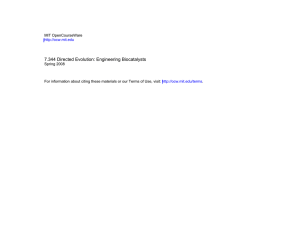7.344 Directed Evolution: Engineering Biocatalysts
advertisement
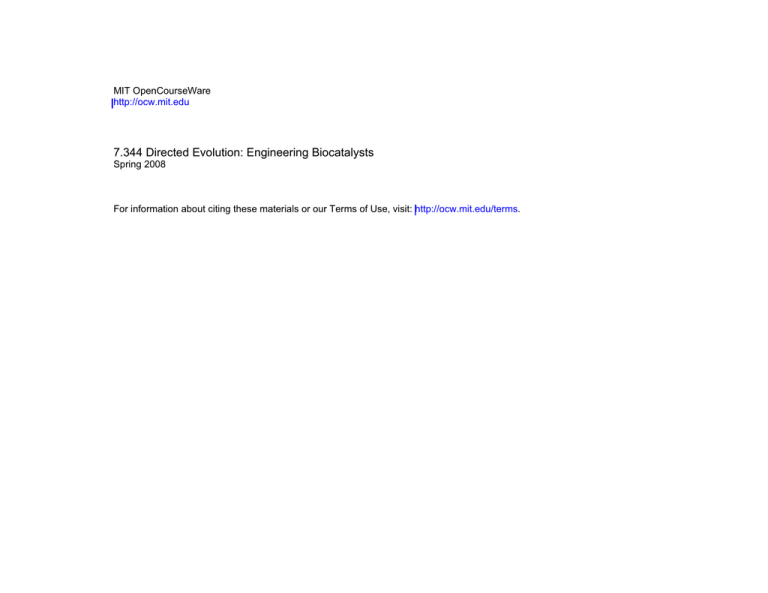
MIT OpenCourseWare http://ocw.mit.edu 7.344 Directed Evolution: Engineering Biocatalysts Spring 2008 For information about citing these materials or our Terms of Use, visit: http://ocw.mit.edu/terms. Enzyme evolution by genetic complementation Yano, T.; Oue, S.; Kagamiyama, H. Directed evolution of an aspartate aminotransferase with new substrate specificities. Proc. Natl. Acad. Sci. USA 1998, 95, 5511-5515. Otten, L.G.; Sio, C.F.; Vrielink, J.; Cool, R.H.; Quax, W.J. Altering the substrate specificity of cephalosporin acylase by directed evolution of the β-subunit. J. Biol. Chem. 2002, 277 (44), 42121-42127. Evolution of an aspartate aminotransferase • What are the authors trying to do? • What is the process by which they conduct their evolution? Explain the Materials and Methods section. • What method of library generation do they use? Is this a good choice? • How do they carry out their selection? • What are the results? Does their explanation of why mutants lead to increased activity make sense? • Why is this evolution worthwhile? JOC paper Aminotransferase catalysis Image of aminotransferase catalytic cycle removed due to copyright restrictions. Explanation of mutations from crystal data Image removed due to copyright restrictions. Please see Fig. 3 in Yano, T., S. Oue, and H. Kagamiyama. “Directed evolution of an aspartate aminotransferase with new substrate specificities.” PNAS. 95(1998): 5511-5515. Evolution of a cephalosporin acylase • What are the authors trying to do? Why is this significant? • How do the authors make their library? Is this reasonable? • What is the selection method in this evolution? • What are the results? • What are the problems or pitfalls in this paper? Cephalosporin synthetic pathway H N H 2N S O CO2H CH3 N CH3 O CO2H Adipate feed Acyltransferase H N S O CO2H N CH3 CH3 O CO2H Expandase/ Hydroxylase Expandase H N O CO2H H N S N O CO2H O S N O CH3 CH3OH CO2H CO2H Acetyltransferase Acylase H N S O CO2H O N O CH2OCCH3 CO2H H2N S Acylase O N O CH2OCCH3 H 2N S CO2H O N O CH2OCCH3 CO2H Positions of mutated residues Image removed due to copyright restrictions. Please see Fig. 4 in Otten, L.G., C. F. Sio, J. Vrielink, R. H. Cool, and W. J. Quax. “Altering the substrate specificity of cephalosporin acylase by directed evolution of the β-subunit.” J. Biol. Chem. 277(2002): 42121-42127. For next week…chemical complementation Transcriptional Activator E SUBSTRATE DNA binding domain reporter gene
